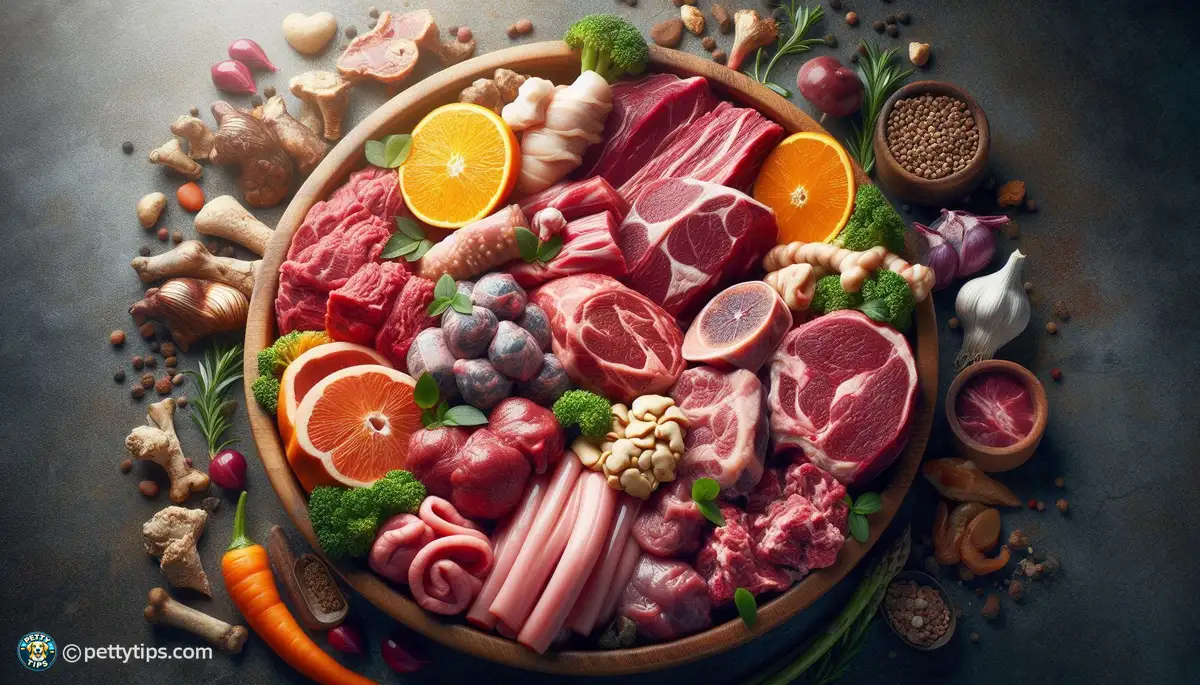- Home
- Pet Nutrition
- Raw Feeding for Pets with Allergies or Sensitivities
Raw Feeding for Pets with Allergies or Sensitivities

Identifying the Problem
Allergies and sensitivities in pets can manifest in various ways, from skin irritations to digestive issues. Often, pet owners find themselves puzzled by the sudden appearance of symptoms in their beloved companions. Scratching, licking, vomiting, diarrhea – these are all signs that something might be amiss with your pet’s diet. Understanding the root cause is crucial for effective management.
Common Culprits
Many allergens lurk in commercial pet foods, including grains, fillers, and artificial additives. These ingredients may trigger allergic reactions or sensitivities in susceptible pets. Additionally, proteins like beef, chicken, and dairy are frequent offenders. Identifying the specific allergen can be challenging but is essential for crafting a suitable diet for your pet.
Benefits of Raw Feeding
Natural Nutrition
Raw feeding provides pets with a diet that closely mimics what they would consume in the wild. This natural approach means fewer additives, fillers, and artificial ingredients that can trigger allergic reactions or sensitivities. By feeding your pet a raw diet, you're giving them the best chance at optimal health and well-being.
Improved Digestive Health
Many pets with allergies or sensitivities struggle with digestive issues, such as diarrhea, gas, or bloating. raw feeding can help alleviate these symptoms by providing easily digestible nutrients in their most natural form. raw diets are rich in enzymes and probiotics, which support a healthy gut microbiome and promote better digestion.
Transitioning to a Raw Diet
Gradual Introduction
Transitioning your pet to a raw diet should be done gradually to avoid digestive upset. Start by replacing a small portion of their current food with raw food and gradually increase the ratio over time. This gradual approach allows your pet's digestive system to adapt to the new diet without causing unnecessary stress.
Monitoring Progress
During the transition period, closely monitor your pet for any signs of discomfort or adverse reactions. Keep track of their stool consistency, energy levels, and overall well-being. If you notice any concerning symptoms, consult with your veterinarian to adjust the diet accordingly.
Crafting a Balanced Raw Diet
Variety is Key
A balanced raw diet should include a variety of protein sources, including beef, chicken, turkey, fish, and organ meats. Each protein source provides different nutrients, ensuring that your pet receives a wide array of essential vitamins and minerals. Incorporating a variety of proteins also reduces the risk of developing new allergies or sensitivities.
Supplementing as Needed
While raw diets are nutritionally complete for most pets, some may require additional supplements to meet their specific needs. omega-3 fatty acids, vitamin E, and probiotics are commonly added to raw diets to support skin health, immune function, and digestive health. Consult with your veterinarian to determine the appropriate supplements for your pet.
Addressing Concerns and Misconceptions
Bacterial Contamination
One common concern with raw feeding is the risk of bacterial contamination, such as Salmonella or E. coli. However, when handled and stored properly, raw food is no more dangerous than handling raw meat for human consumption. Following proper food safety protocols, such as washing hands and cleaning surfaces, can minimize the risk of bacterial contamination.
Nutritional Imbalance
Another misconception about raw feeding is the potential for nutritional imbalance. While it's essential to ensure that your pet's diet is balanced, this can easily be achieved by following a well-researched recipe or feeding a commercial raw diet formulated by reputable manufacturers. Regularly rotating protein sources and incorporating variety into your pet's diet further reduces the risk of nutritional deficiencies.
Monitoring and Adjusting
Regular Veterinary Check-ups
Even with a carefully crafted raw diet, it's essential to schedule regular veterinary check-ups for your pet. Your veterinarian can assess your pet's overall health, address any concerns, and make adjustments to their diet as needed. Monitoring your pet's weight, coat condition, and energy levels can also provide valuable insights into their dietary needs.
Fine-Tuning the Diet
Pets, like humans, may have changing nutritional requirements based on factors such as age, activity level, and health status. It's essential to remain attentive to your pet's evolving needs and adjust their diet accordingly. Working closely with your veterinarian ensures that your pet receives personalized nutrition tailored to their specific requirements.
Conclusion
In conclusion, raw feeding can be a beneficial option for pets with allergies or sensitivities. By providing a natural, balanced diet, pet owners can support their companion's overall health and well-being. Understanding the root cause of allergies and sensitivities, transitioning gradually to a raw diet, and monitoring your pet's progress are key steps in successfully managing their dietary needs. With proper care and attention, raw feeding can help your pet thrive for years to come.
